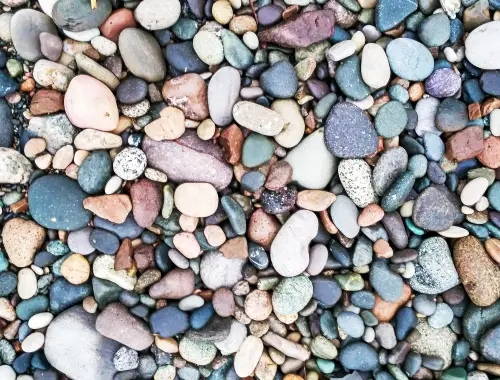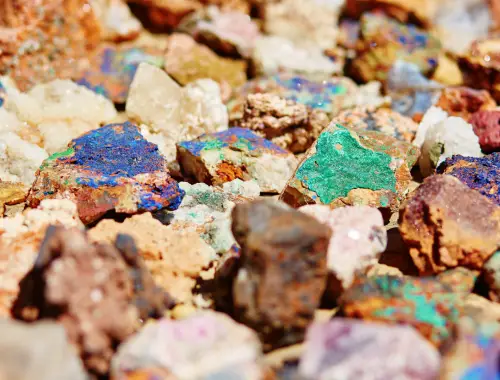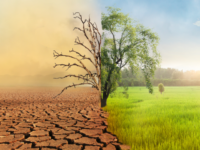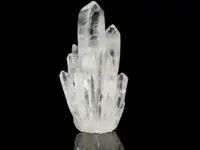Have you ever looked at a rocky mountain or a shiny gemstone and wondered what they are and what they have in common? Well, rocks and minerals are everywhere; in fact, we use things made from them almost every day. So, what do rocks and minerals have in common? In this article, we will explore the fascinating similarities and differences between these earthly treasures.

What are rocks?
Rocks are solid, naturally occurring substances that form the Earth’s crust. They come in various types, such as igneous, sedimentary, and metamorphic. These natural formations are all around us, from the towering cliffs to the pebbles on the beach. Rocks are composed of minerals, and their formation is shaped by geological processes over millions of years.

What are minerals?
Minerals are the building blocks of rocks. They are naturally occurring inorganic substances with distinct properties like color, hardness, and luster. Unlike rocks, minerals are crystalline in nature, which means their atoms are arranged in an orderly manner. Minerals are formed through various processes, including the cooling of molten material and precipitation from solutions. You might recognize common minerals like quartz or feldspar from everyday life.
Key Similarities
Here are some shared characteristics that rocks and minerals have in common:
- Natural Formation: Both rocks and minerals are naturally formed substances. They originate through natural geological processes over long periods of time. Whether it’s volcanic activity shaping igneous rocks or minerals crystallizing in underground caves, Earth’s processes play a crucial role.
- Components of the Earth’s Crust: Rocks and minerals are integral components of the Earth’s crust. They make up a significant part of the Earth’s solid structure. Rocks constitute the larger geological formations we see, while minerals are the microscopic building blocks that compose these rocks.
- Geological Influence: Geological factors play a substantial role in the formation of both rocks and minerals. Volcanic activity, tectonic movements, and environmental conditions all influence their creation.
- Significance: Both provide essential resources for human activities and contribute to the Earth’s ecological processes, such as soil formation and nutrient cycling. They are used in various industries, such as construction, jewelry, and manufacturing.
Key Differences
While there are similarities, there are also key differences between rocks and minerals. Here are a few of them:
- Composition: Rocks are typically composed of multiple minerals, mineraloids, or organic materials. Minerals are pure, naturally occurring substances with a specific chemical composition and an ordered atomic structure.
- Structure: Rocks have a more heterogeneous structure. They can contain a variety of minerals and may also include non-mineral components like organic matter, fossils, or even glassy substances. Atoms in minerals are arranged in a specific crystalline pattern, giving them distinct shapes and properties.
- Formation: Rocks are formed through geological processes like the cooling and solidification of molten material (igneous rocks), the accumulation and compression of sediments (sedimentary rocks), or the alteration of existing rocks due to heat and pressure (metamorphic rocks).
Minerals form through a variety of processes, including crystallization from magma or lava, precipitation from aqueous solutions, or sublimation from gases.
- Appearance: Rocks exhibit a wide range of textures, colors, and compositions, making them highly variable. Different rocks can look very different from each other. Minerals are more uniform and consistent in their appearance and properties.
- Size and Scale: Rocks are typically larger and more visible to the naked eye, ranging from small pebbles to massive mountain formations. Minerals are often microscopic or small in scale and require a magnifying lens or microscope to observe their crystal structure and properties.
- Uses and Applications: Rocks are primarily used in construction materials, such as gravel, sand, and stone, but can also be used for artistic purposes and landscaping. Minerals have a diverse range of applications, including gemstones and jewelry (e.g., diamonds, sapphires), industrial uses (e.g., iron ore, copper), and technological applications (e.g., silicon for electronics).
Fun Facts
Did you know that diamond, one of the hardest minerals, is made entirely of carbon atoms arranged in a crystal lattice? Or that some rocks, like obsidian, are formed from volcanic glass? Here are some other fun facts about rocks and minerals:
- Obsidian, a type of volcanic glass, is so sharp that ancient civilizations used it for making cutting tools and arrowheads.
- Some minerals, like fluorite and calcite, can fluoresce under ultraviolet (UV) light. They emit vibrant colors, creating a stunning visual display in UV-illuminated environments.
- Some of the oldest rocks on Earth aren’t even on Earth anymore. They’re meteorites that have fallen from space.
- Each month is associated with a specific birthstone, often a mineral or gemstone. For example, garnet is the birthstone for January, amethyst for February, and so on.
- Pyrite, often called “fool’s gold,” resembles real gold but is much less valuable.
- Tektites are glassy rocks formed when a meteorite strikes the Earth’s surface.
Everyday Uses of Rocks and Minerals
- Granite: It’s a popular choice for kitchen and bathroom countertops due to its durability and attractive appearance. It’s often used for building monuments and gravestones.
- Limestone: It’s a key component in construction materials such as cement and concrete. It’s also used to improve soil quality and provide essential nutrients to crops.
- Quartz: Quartz crystals are used in timekeeping devices, like quartz watches and electronics devices for their stability and accuracy.
- Copper: It’s an excellent conductor of electricity, making it a crucial material for electrical wiring and circuits. It’s used in plumbing systems due to its corrosion resistance and durability.
- Gypsum: It’s used in drywall, plaster, and other construction materials for its fire-resistant and soundproofing properties. It’s also used in dental and medical plaster casts.
- Sand: It’s used in making glass for windows, bottles, and various glass products. Sand is used for creating beaches, playgrounds, and leveling surfaces.
- Clay: It’s the primary material for making pottery, ceramic tiles, and porcelain products. It’s also used for making bricks, which are widely used in construction.
Summary
Rocks and minerals may seem like simple components of the Earth’s crust, but their intricacies are worth exploring. They share commonalities in their formation and importance, yet they have distinct differences in composition and structure. So, next time you encounter rocky terrain or a dazzling mineral, remember that there’s more to them than meets the eye.
FAQs
What rocks and minerals glow under ultraviolet light?
Common minerals that can glow include calcite, fluorite, willemite, and scheelite. When exposed to UV light, they emit visible light in various colors, creating a striking effect.
What rocks and minerals give similarities and differences?
Rocks and minerals originate in the Earth’s crust, are formed through geological processes, and are naturally occurring substances.
Rocks are aggregates of minerals, mineraloids, or organic materials and have a more heterogeneous composition. Minerals are pure, inorganic substances with specific chemical compositions and ordered atomic structures. Minerals are the building blocks of rocks.
How are rocks and mineral elements related?
Rocks are composed of minerals, which in turn are made up of chemical elements. The chemical elements combine to form minerals through specific atomic arrangements. These minerals, when aggregated with other minerals and materials, create rocks.
Which minerals are most commonly associated with rocks?
For example, in igneous rocks, you often find minerals like quartz, feldspar, and mica. In sedimentary rocks, you may find minerals like calcite, gypsum, and clay minerals. In metamorphic rocks, minerals like garnet, schist, and marble-forming calcite can be prevalent.
What are five characteristics all rocks have in common?
- Rocks are formed by natural geological processes over time.
- Rocks are solid, meaning they maintain their shape and volume under normal conditions.
- Rocks are composed of minerals, mineraloids, or other materials.
- Rocks are the result of geological processes like cooling, erosion, or pressure.
- There are various types of rocks, including igneous, sedimentary, and metamorphic, each with its own set of characteristics and formation processes.












Leave a Reply